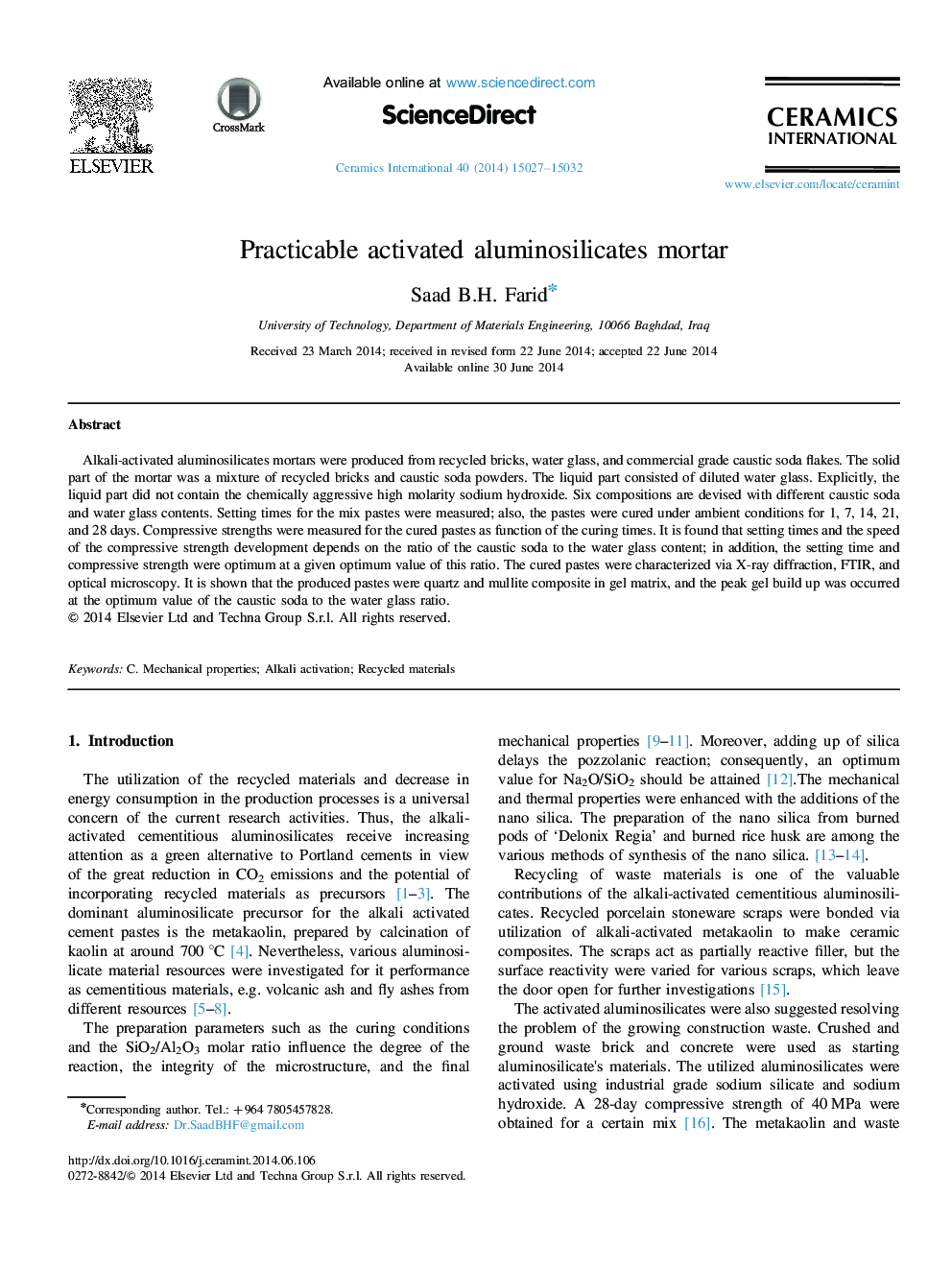| Article ID | Journal | Published Year | Pages | File Type |
|---|---|---|---|---|
| 1461250 | Ceramics International | 2014 | 6 Pages |
Alkali-activated aluminosilicates mortars were produced from recycled bricks, water glass, and commercial grade caustic soda flakes. The solid part of the mortar was a mixture of recycled bricks and caustic soda powders. The liquid part consisted of diluted water glass. Explicitly, the liquid part did not contain the chemically aggressive high molarity sodium hydroxide. Six compositions are devised with different caustic soda and water glass contents. Setting times for the mix pastes were measured; also, the pastes were cured under ambient conditions for 1, 7, 14, 21, and 28 days. Compressive strengths were measured for the cured pastes as function of the curing times. It is found that setting times and the speed of the compressive strength development depends on the ratio of the caustic soda to the water glass content; in addition, the setting time and compressive strength were optimum at a given optimum value of this ratio. The cured pastes were characterized via X-ray diffraction, FTIR, and optical microscopy. It is shown that the produced pastes were quartz and mullite composite in gel matrix, and the peak gel build up was occurred at the optimum value of the caustic soda to the water glass ratio.
